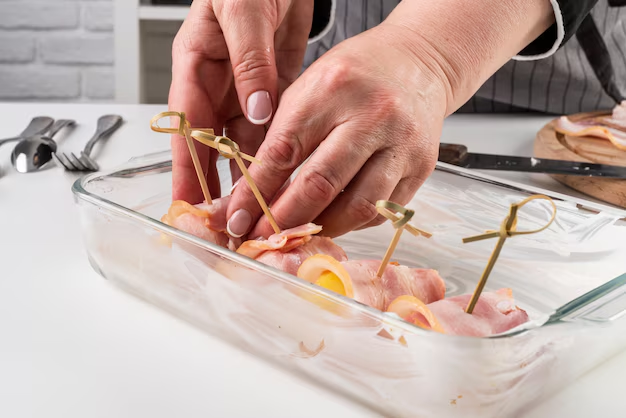Transforming Your Freezer into a Refrigerator: A Step-by-Step Guide
In an increasingly sustainability-conscious world, versatility and resourcefulness are becoming valuable assets. One intriguing concept gaining traction is the transformation of a common household appliance—a freezer—into a refrigerator. This conversion can not only save money but also repurpose an unused freezer into a practical asset. Whether you're motivated by a desire to reduce energy consumption, economize, or just plain curiosity, converting a freezer into a refrigerator is a project more achievable than you might think.
Why Convert a Freezer into a Refrigerator?
🤔 The Motivation Behind Conversion
The decision to convert a freezer into a refrigerator can stem from various motivations.
- Cost Efficiency: Instead of purchasing a new refrigerator, converting an existing freezer can save significant costs.
- Energy Conservation: Freezers typically consume more electricity than refrigerators. Converting a freezer into a refrigerator can be more energy-efficient, potentially reducing your energy bills.
- Space Utilization: Transforming an unused freezer into a functional refrigerator can help optimize space, particularly for those living in smaller homes or apartments.
Understanding the Differences
Before embarking on this transformation, it's crucial to understand the fundamental differences between freezers and refrigerators:
- Temperature Range: Freezers generally operate at temperatures around 0°F (-18°C), while refrigerators maintain a broader range of 34°F to 40°F (1°C to 4°C).
- Cooling Mechanism: Refrigerators often cycle on and off to maintain a steady temperature, whereas freezers are designed to run continuously to preserve frozen goods.
Armed with this knowledge, you can approach the conversion with realistic expectations and practical insights.
Tools and Preparation
🛠️ Necessary Tools and Equipment
To convert your freezer into a refrigerator, you'll need some key tools and materials. Here's a brief list to get you started:
- External Thermostat Controller: This device will be the cornerstone of your conversion. It regulates the freezer's temperature to fridge-like levels.
- Screwdriver: Useful for detaching any necessary parts.
- Sealant or Tape: Ensures good insulation and prevents temperature fluctuations.
- Cleaning Supplies: Make sure the freezer is clean before starting your project.
Safety Precautions
While this project is generally safe, it's important to observe some precautions:
- Unplug the Freezer: Always unplug the appliance before starting any work to avoid electrical hazards.
- Check Product Specifications: Not all freezers are suitable for conversion. Verify your appliance's compatibility with an external thermostat controller.
- Inspect the Condenser Coils: Ensure they are clean and in good condition to maintain optimal performance.
Step-by-Step Conversion Process
🗂️ Installing an External Thermostat Controller
- Select the Right Thermostat Controller: Choose a model specifically designed for freezer-to-refrigerator conversions.
- Attach the Thermostat Probe: Place the sensor inside the freezer, ideally in a spot where it won't be obstructed by food items.
- Program the Thermostat: Set the desired temperature range typical for refrigeration (34°F to 40°F or 1°C to 4°C). Follow the manufacturer's instructions for programming specifics.
Securing Proper Insulation
To ensure consistent temperature and minimize energy use, check and reinforce the insulation:
- Seal Gaps: Use sealant or tape to close any gaps around the door.
- Check the Door Gaskets: Make sure they are intact and provide a tight seal.
Power and Test
- Plug In the Freezer: Connect the appliance back to the power source.
- Monitor Temperature: Allow the system to stabilize and monitor the temperature for a few days, making adjustments to the settings as needed.
Practical Tips for Success
🌟 Optimizing Performance and Maintenance
- Regular Cleaning: Keep the interior clean and free of ice buildup for efficient operation.
- Avoid Overloading: Ensure that airflow isn't obstructed by an overabundance of items.
- Check for Leaks: Regularly inspect seals and gaskets to prevent cold air leakage.
Common Missteps to Avoid
- Neglecting Compatibility: Always ensure your freezer model is suitable for conversion.
- Ignoring Safety Warnings: Follow all safety guidelines to avoid injury or damage to the appliance.
Exploring the Benefits: Real-Life Applications
🍇 Expanded Storage Solutions
Effortlessly convert your freezer to accommodate different storage needs:
- Beverages and Produce: Create additional space for chilling drinks and preserving fresh produce.
- Seasonal Surplus: During holiday seasons or special occasions, easily extend your refrigeration capacity.
Environmental Impact and Sustainability
Converting a freezer rather than purchasing a new refrigerator supports environmental efforts through reduced waste and energy consumption. It’s an innovative way to contribute positively to sustainability goals.
Summary Section: Key Takeaways
Here’s a concise rundown to help with planning and execution:
🔑 Quick Tips for Conversion Success
- 🛠️ Essential Tool: Invest in an external thermostat controller for effective temperature regulation.
- ⚡ Safety First: Always unplug the freezer before starting your conversion process.
- 📊 Monitor Performance: Regularly check and adjust the temperature settings as needed for optimal performance.
- 🔍 Regular Maintenance: Keep the space clean and ensure that airflow is not obstructed.
- 🌱 Go Green: Embrace sustainability by repurposing existing appliances.
By understanding the process and preparing adequately, converting a freezer into a refrigerator can be a straightforward and rewarding DIY project. This approach not only allows for economic adjustments but also contributes positively to more sustainable living. If you were contemplating an alternative use for your freezer, now's the time to explore its potential as a refrigerator. Enjoy the conversion process and the new life you've breathed into this common household appliance!
